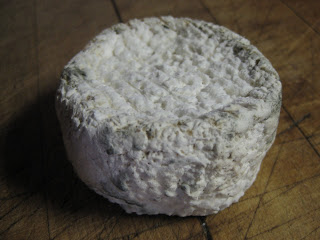
Last week, when making a batch of lactic type cheese, I decided to predrain the curd in cheesecloth instead of ladling them directly into the forms as I had been doing. I hope to end up with a slightly dryer curd, leading to a firmer cheese which would age a little slower and therefor keep longer.
I used three gallon of raw Holstein milk which I cultured with Choozit MA4001, Aroma B and some Geo 17. I added 1 ml of animal rennet and let it set for 36 hours at about 67F.
I ladled the curd into a colander lined with cheesecloth and let this drain for 12 hours. While packing the curd in the forms, I noticed a difference in consistency. There were some harder parts it mass as well as some wetter spots. The curd had obviously not drain equally. This might lead to some inconsistencies in the cheeses. We will see.
Because in general the curd was pretty dry and plyable, I formed some cheeses by hand. I had ran out of forms.
















